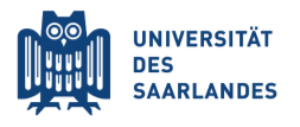Abstract
There is growing evidence that simultaneous analysis of multiple autoantibody reactions can be utilized for diagnosis of neoplasms. Using a set of 57 meningioma-associated antigens, we recently separated meningioma patients from individuals without known disease with an accuracy of 90.3%. Here, we ask whether a largely increased set of immunogenic antigens can further improve this discrimination. We used an array with 1,827 human recombinant clones and measured reactivity of serum autoantibodies against the clones by a novel automated image analysis procedure. We were able to separate meningioma sera from sera of healthy controls with a specificity of 95.62%, a sensitivity of 91.83% and an accuracy of 93.84%. Of the analyzed clones, 23 in-frame clones were highly informative for the classification of meningioma vs. normal sera as shown by their AUC values. These results demonstrate that the accuracy of a serum-based diagnostic can be readily and considerably improved by screening extended sets of proteins.
The majority of meningiomas are benign tumors arising from the coverings of the central nervous system. They account for approximately 20% of all primary intracranial neoplasms and show an average annual incidence of 6 per 100,000.1 The World Health Organisation (WHO) defines three malignancy grades. WHO I meningioma that account for 90% of all meningioma are generally slow-growing tumors with a favorable prognosis. WHO II meningioma or atypical meningioma that account for 8–9% of all meningioma tend to occur at younger age and have a tendency for progression and recurrences. WHO III meningioma or anaplastic meningioma that account for 1–2% of all meningioma are fast-growing malign neoplasms with very poor prognosis. The most common chromosomal aberration in meningioma is the loss of chromosome 22 or 22q with the NF2 gene on 22q12 as the tumor suppressor gene most closely associated with meningioma formation.2–5 Other genes on chromosome 22q associated with meningioma include BAM22, LARGE, INI1, MN1 and members of the protein 4.1 super family.6–9 There is, however, only circumstantial evidence for a role of these genes in the development of meningioma. Chromosomal changes particularly associated with meningioma progression include gains on 1q, 9q, 12q, 15q, 17q and 20q, as well as losses on chromosome 1p, 6q, 9p, 10, 14q, and 18q.10, 11 Among the candidate tumor suppressor genes are CDKN2C and TP73 on 1p, CDKN2A/B and p14ARF on 9p and MEG3 on 14q.12–14
There is growing evidence that the immune response against neoplasms can be utilized for diagnosis.15 Since the mid–1990s, several methods have been developed to screen sera of tumor patients for autoantibodies against tumor-associated antigens. These approaches include serological screening of recombinantly expressed clones (SEREX)16 and phage display.17 However, single antigens that react with serum autoantibodies show a lack of sensitivity and specificity when used for tumor diagnosis. Alternatively, a combination of antigens can be used to simultaneously detect several autoantibodies within a serum. Such autoantibody signatures have been reported for patients with prostate cancer, lung adenocarcinoma, non-small cell lung cancer or ovarian cancer.18–22 Previously, we identified autoantibody signatures for patients with glioma, meningioma and lung cancer.23–27 The combined immunogenic antigens allowed for differentiating cancer sera from sera of persons without known disease with both high sensitivity and specificity.28, 29 Recently, we found evidence that cancers can even be distinguished from pathologies of the same organ.30
In this study, we further elucidated the complexity of the humoral response against meningioma. We screened an array encompassing 1,827 antigen-expressing clones with 53 sera of meningioma patients and 60 sera of persons without known disease. Analysis was automated by newly developed computer-aided image analysis software that was tailored to the evaluation of protein macroarrays to identify seroreactivity patterns. We ask whether a separation of meningioma and healthy sera is possible based on their seroreactivity pattern and which are the responsible antigens. Previously, the array has been successfully used to distinguish between glioma sera and healthy controls with high sensitivity and specificity.31 By combining the data on glioma with the meningioma data reported in this study, we ask whether a separation between meningioma and glioma sera is also possible and which antigens are responsible for the latter separation.

